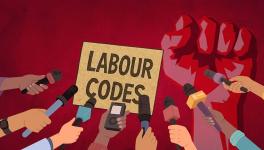Why Unsigned Addenda to Ayodhya Verdict Must Go

File Photo
One notable and never-seen-before feature of the recent verdict of the Supreme Court in the Babri Masjid-Ram Janmbhoomi dispute is the separate and anonymous “addenda” affixed to the unanimous ruling of the five-judge bench. Running into 116 pages, this addenda marks a completely new beginning; that of a judge making his opinion public through a secret method.
There is no signature on the addenda, nor is the name of its author revealed. Therefore, no one can discern which of the five judges subscribed to the views expressed in it. This makes the addenda akin to a judgment delivered in a sealed cover. According to all five judges, the contents of the addenda reflect the viewpoint of only one of them, but who the author is the personal knowledge of only the five judges on the bench.
The Code of Civil Procedure, 1908, sets the procedure for delivering a judgment in India. It mandates that the court shall “pronounce”, sign and put the date on a judgment in open court. This procedure has always been followed by the Supreme Court for pronouncing all its judgments. In cases where there are more than one judge, each is free to write a separate opinion or deliver joint opinions.
In case two or more judges write separate opinions, each may have different reasons to arrive at the same or different conclusion(s). In case the judges differ in terms of conclusions, then the verdict will go as per the conclusion arrived at by a majority of the members on a bench. In this entire process, three situations could arrive. In the first situation, a judge may write an opinion and other judges may agree without writing their separate reasons, or they may write a “concurring” opinion. The second situation may be that one or more judges, depending upon the number of judges on the bench, may not agree with the majority judgment. Then, a judge could write a separate, “dissenting” opinion, commonly called the “minority” judgment. Hence, there are only three known methods for writing judgments: the majority opinion, the concurring opinion and the dissenting opinion.
Each category of judgment is pronounced and signed by the concerned author-judge in an open court, separately, and the said facts are recorded in the minutes of the proceedings. The minutes drawn by the Supreme Court on the day it pronounced the Ayodhya judgment reflect that only one joint opinion of five judges was “pronounced”, probably because the author of the addenda did not sign it. Therefore, after the Ayodhya judgment, we have a fourth category of judgments which one can “addenda judgment”, which shall neither be signed by the author of the addenda nor pronounced in open court.
An addenda is generally used to reflect additional materials or terms, as in a book or contract. In an addenda to a contract, all the parties or named parties to an agreement concur on the terms set out in it to record additional agreed terms to the main contract. In the case of a book, an addenda is meant to reflect either some correction to the printed material or add new material. The term “addenda” does not fit into the scheme of writing judgments.
This is an extra-judicial method to express the thought process of a judge who did not want to be named. It is also incorrect on the part of the four other judges when they recognised the additional, unsigned and un-pronounced “reasons” of the learned unnamed judge set out in an addendum. If a judge is of a certain opinion based on record, he cannot hide himself behind the shadow of the other judges who have disowned the reasons set out in the addenda. One judge has subscribed to the unanimous view of the bench, which follows a particular line of reasoning. The same judge has also opined the views in the addenda, without stating that the views in it are not agreeable to him. Rather, he has signed off on that view as well. Hence, there is conflict between the main and addenda judgments. This method frustrates the very basic concepts of fairness, fearlessness and transparency in the judicial process of the highest court of record.
In the last few years, there have been instances when the Supreme Court has invited and accepted documents in sealed cover. The contents of materials produced in sealed covers are known to the party who submitted it and to the court, but not to the other contesting parties. In our adversarial system of litigation, howsoever sensitive any material produced before a court may be, if the view of judges are sought to be influenced by such material, then either all the contesting parties should have access to it, or it should not be produced before the court at all. This method of producing “documents under sealed cover” is equally adverse to the concept of fairness and against the principles of natural justice.
The apex court must adopt methods which strengthen the confidence of people in the system and advance fairness and transparency in the adjudicatory process rather than follow the concept of anonymous judgments added to unanimous ones. An “addenda judgment” has no value. It cannot even be equated with the minority opinion of a judge, as this addenda does not meet the basic requirements of a “judgment”. In future, a litigant shall read the addenda view for some purpose. Hence, to prevent abuse of process, it should not be allowed to remain as part of the record of the judgment in this matter any more.
The writer as advocate-on-record, Supreme Court of India. He appeared in the Ayodhya matter for Muslim parties.
Get the latest reports & analysis with people's perspective on Protests, movements & deep analytical videos, discussions of the current affairs in your Telegram app. Subscribe to NewsClick's Telegram channel & get Real-Time updates on stories, as they get published on our website.
























